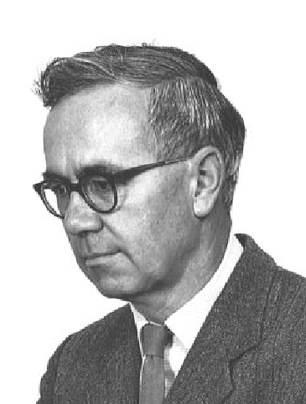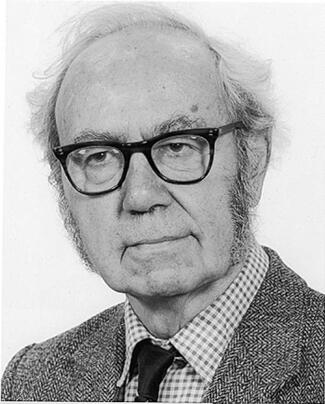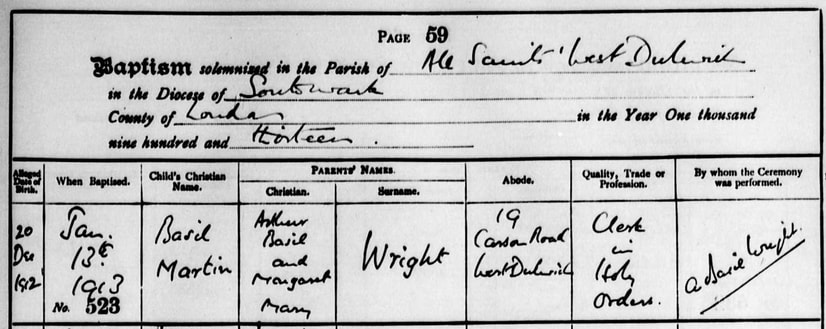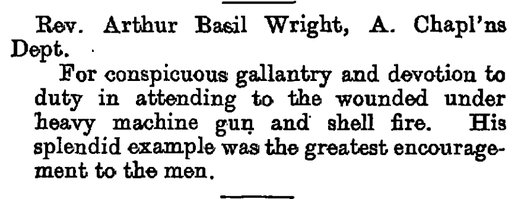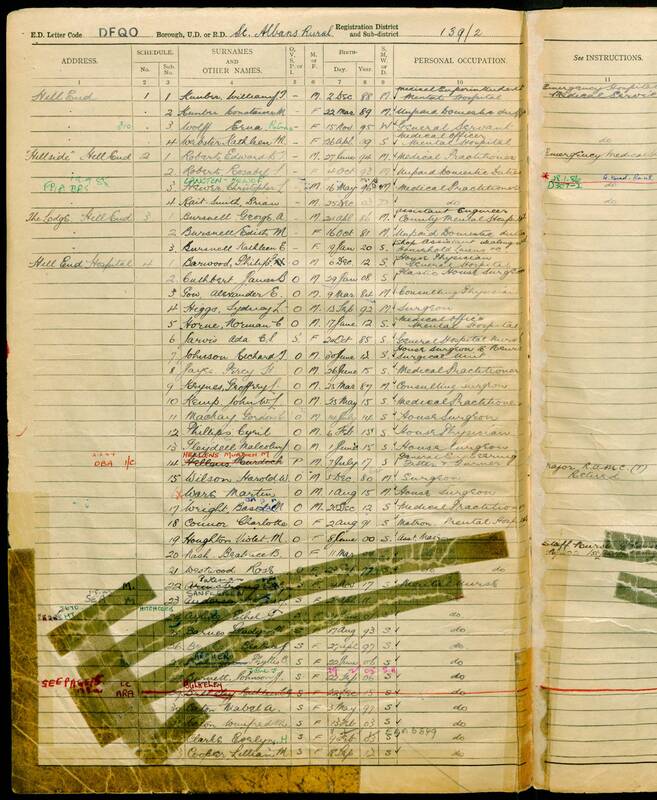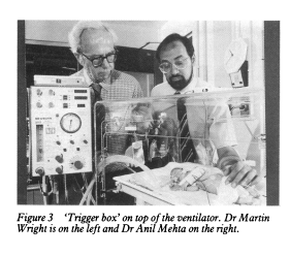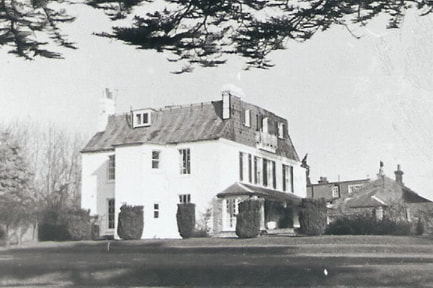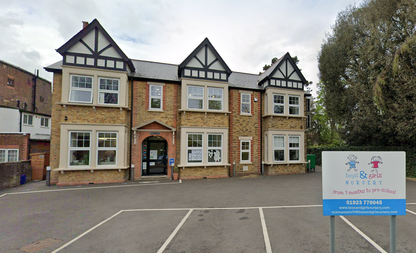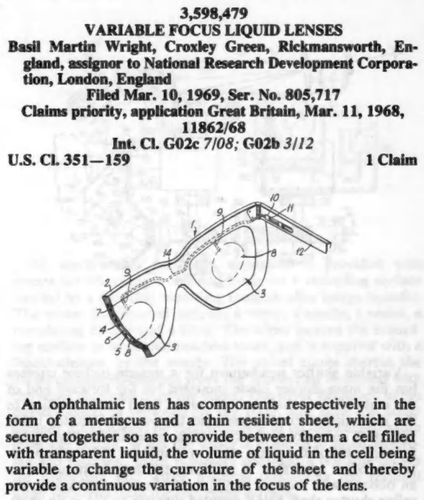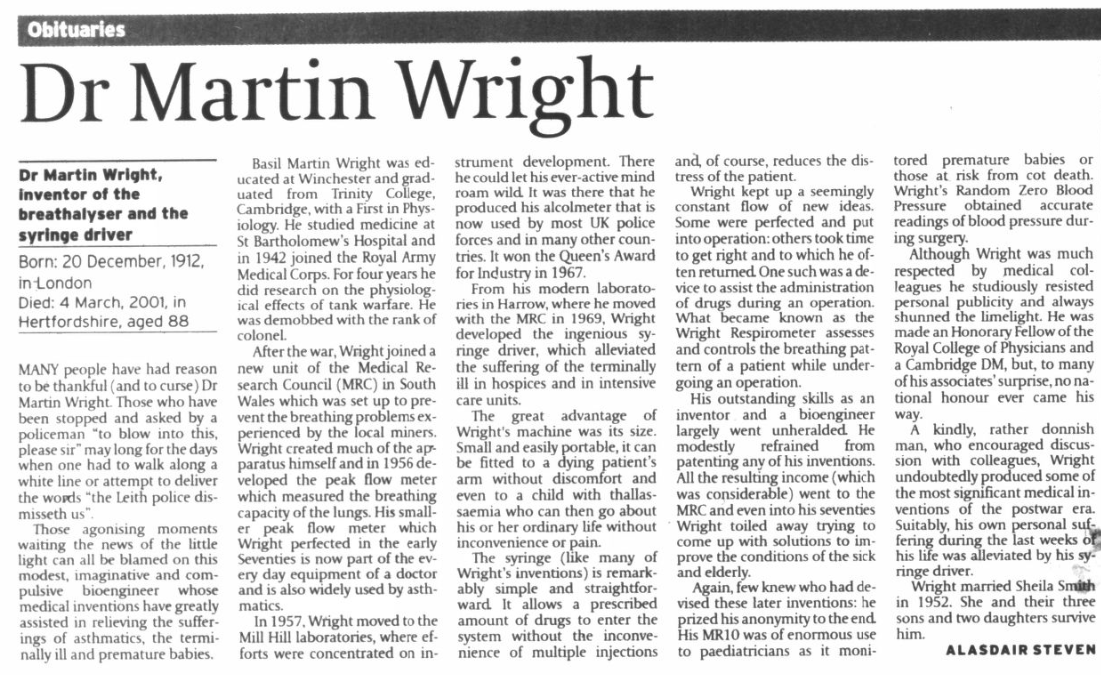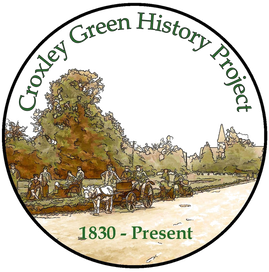Doctor Basil Martin Wright
For many years, Dr. Basil Martin Wright (usually known as Martin Wright) lived with his wife Sheila and children in Croxley Green, firstly at Scots Hill House and then Halewood Cottage, The Green. His career in the medical sector influenced and helped hundreds of people and he invented and designed medical instruments which gave relief from life-threatening conditions, such as pneumoconiosis, thalassemia and cot death. His simple designs allowed for them to be manufactured and produced cheaply on a very large scale.
He is best known for his invention of the breathalyser that would influence the drink-driving campaign. Drivers who were suspected of being over the safe 'limit' of alcohol could now be stopped and instantly tested. This device, known as the Alcolmeter, was developed with the assistance of Tom Jones and won a Queen's Award for Industry.
Basil Martin Wright was born on 20th December 1912 in Dulwich and he was baptised at All Saints Church, West Dulwich on 13th January 1913.
He is best known for his invention of the breathalyser that would influence the drink-driving campaign. Drivers who were suspected of being over the safe 'limit' of alcohol could now be stopped and instantly tested. This device, known as the Alcolmeter, was developed with the assistance of Tom Jones and won a Queen's Award for Industry.
Basil Martin Wright was born on 20th December 1912 in Dulwich and he was baptised at All Saints Church, West Dulwich on 13th January 1913.
At this time, his father Arthur Basil Wright was vicar of St Paul’s church, Lorrimore Square in Walworth, SW London. Reverend Wright had served in WW1 in the Army Chaplains’ Department and in 1918 was awarded the Military Cross in the New Years Honours.
Basil Martin Wright was educated at Winchester College where his talent for repairing the watches of his masters was well noted. He then went up to Trinity College, Cambridge, from where he graduated with a First in Physiology.
After clinical training at St Bartholomew's Hospital, Dr. Wright was recorded as being at Hill End Hospital, St. Albans, working as a Medical Practitioner. During the war, he joined the Royal Army Medical Corps in 1942 as a pathologist and spent time researching into the physiological effects of tank warfare. He was later tasked with developing a laboratory service for the army in Freetown, West Africa, and later in Singapore; a challenge which needed his inventive skill. During his time in the Army, he rose to the rank of Colonel.
In 1949 he was recruited by the Medical Research Council to lead a pioneering study into the miners’ disease: pneumoconiosis (a lung disease caused by inhaling mineral or metallic dust) at Llandough Hospital, Penarth, South Glamorgan. Here he invented the first peak flow meter in 1959. This was a large machine used to assess respiratory function and in 1974 he invented a portable plastic version which was soon to be found in every consulting room and in the homes of lung disease patients.
For the next decade, Dr. Wright concentrated solely on instrument development at the National Institute for Medical Research, Mill Hill, London. There, he was actively involved in the study of breath alcohol, advising the government on the implementation of the 1967 drink-driving laws.
A pocket-sized, battery-powered syringe driver was also his invention. This enabled children with thalassaemia (an hereditary haemoglobin disorder) to be treated without affecting their normal daily routines. It was found to be beneficial in a wide range of other conditions as well and was used in intensive care units. Terminally-ill patients could receive continuous pain-relieving drugs with this device.
In 1949 he was recruited by the Medical Research Council to lead a pioneering study into the miners’ disease: pneumoconiosis (a lung disease caused by inhaling mineral or metallic dust) at Llandough Hospital, Penarth, South Glamorgan. Here he invented the first peak flow meter in 1959. This was a large machine used to assess respiratory function and in 1974 he invented a portable plastic version which was soon to be found in every consulting room and in the homes of lung disease patients.
For the next decade, Dr. Wright concentrated solely on instrument development at the National Institute for Medical Research, Mill Hill, London. There, he was actively involved in the study of breath alcohol, advising the government on the implementation of the 1967 drink-driving laws.
A pocket-sized, battery-powered syringe driver was also his invention. This enabled children with thalassaemia (an hereditary haemoglobin disorder) to be treated without affecting their normal daily routines. It was found to be beneficial in a wide range of other conditions as well and was used in intensive care units. Terminally-ill patients could receive continuous pain-relieving drugs with this device.
|
In 1969 he moved to the MRC’s Hampstead laboratories, in preparation for a further move in 1971 to the new clinical research centre, at Northwick Park Hospital, Harrow. Here he developed and improved an alarm system that had been designed to detect when a baby had stopped breathing. The original versions were cumbersome and unreliable. His new alarm detected breath movements via a small capsule taped to the abdomen. It is still widely used for monitoring babies born prematurely or at risk from cot death.
|
In 1952, Basil Martin Wright married Sheila Smith, then working at the MRC head office as a Publications Officer. They had three sons and two daughters and Dr Wright would invent various contraptions with which to amuse his children, including an aerial railway that conveyed a bathtub and a bicycle. He loved all machines and mechanical devices, and was never happier than when a washing machine reached the end of its useful life, so he could re-use its moving parts. His wife Sheila was an active District Councillor for Croxley Green at Three Rivers District Council for many years. As well as Scots Hill House and Halewood Cottage, the family also lived at Greville House, Chorleywood Road and Fearnley House.
Dr. Wright was clearly a prolific inventor as exampled in his 1971 Patent application in USA for Variable Focus Liquid Lenses
Dr. Wright died in Croxley Green on 4th March 2001. He had worked on well into his 70's when, finally, he was made an honorary fellow of the Royal College of Physicians and a Cambridge DM (Doctor of Medicine). He also received a prize from the Institute of Mechanical Engineers to add to the two design awards and the gold medal he had won at the International Inventors' Fair.
